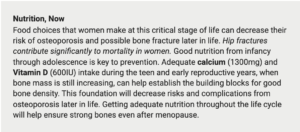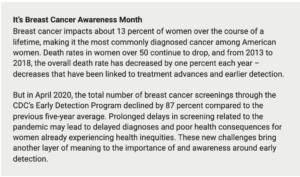Adolescence
Puberty is the defining change for adolescence. During this time, the ovaries start to make and release estrogen and progesterone into the circulation, which in turn causes changes to a girl’s body and reproductive system. This transition typically occurs over several years – it is not linear. Irregular fluctuations in this process can result in problems, such as development of ovarian cysts and heavy, painful periods.
One option that can prevent those issues, as well as benefit long-term health, is the use of oral contraceptive pills to regulate the menstrual cycle. These pills most commonly contain low doses of both estrogen and progesterone, and can regulate cycles, make bleeding much lighter, decrease (or eliminate) menstrual cramping, prevent the formation of ovarian cysts, and may help smooth out premenstrual mood changes that commonly accompany puberty. They provide an excellent option for girls to help manage medical issues that arise during puberty. Interestingly, these same pills decrease a woman’s risk of ovarian and uterine cancer later in life.
Additionally, adolescents must make conscious choices that help prevent infection – for themselves and others. Gonorrhea and chlamydia, for example, are infections commonly known to cause scarring in the fallopian tubes and pelvis and can result in infertility. Consistent condom use can prevent transmission of these infections, and their subsequent complications.
Another infection that can have dire consequences: HPV, the human papillomavirus. Many people remain unaware that this vaccine administered in both boys and girls during adolescence can prevent cancer from developing in women in their 30s and 40s. HPV vaccination in teens at ages 11-12 prevents 90 percent of cervical cancers in the United States. HPV vaccination is also FDA approved to prevent head and neck cancers that develop later in life in both men and women. A strong vaccination program will lead to eradication of cervical cancers worldwide. Currently, Australia is on track to accomplish this goal by the year 2030.

Childbearing Years
Critical health choices during the childbearing years clearly affects health later in life. Many of these choices arise during pregnancy, when hormones can cause medical complications during pregnancy. One example is the development of gestational diabetes (GDM). While placental hormones may play a role, insulin resistance causes GDM, and it is important for women to learn how to manage their diet and do their best to control their sugar levels. Women with GDM have a higher risk of developing recurrent GDM, prediabetes, and overt diabetes in the next five years. Additionally, a history of GDM is predictive of an increased risk of developing Type 2 diabetes, metabolic syndrome, and cardiovascular disease in later life. GDM patients have a nearly 10-fold higher risk of developing Type 2 diabetes. Optimal sugar control can decrease their future risks of both diabetes and heart disease later in life.
Attention to weight fluctuations both during and after pregnancy can also impact health later in life. Excess weight gain in pregnancy can lead to health complications for both the mother and the baby. Furthermore, inability to lose the weight between pregnancies is considered a major contributor to adult obesity in the U.S.
Following the delivery, breastfeeding is a personal choice for families. Women typically think of the benefits of breastfeeding with regards to the baby. But there are many benefits for moms as well. Specifically, breastfeeding can decrease proliferative changes in the breast, thus reducing future breast cancer risk.
Perimenopause
Finally women reach “perimenopause,” the final transition of their hormones towards that last menstrual period (called the “menopause”). The average age of menopause is 51 in the U.S. During this transition time, ovaries are decreasing in their hormone production and becoming quiescent. Women commonly become more focused on long-term health at this stage in life. Most are aware that getting regular mammogram screening can help with early detection of breast cancer – a leading concern for perimenopausal women.
What many women don’t realize is that cardiovascular disease (not breast cancer) remains the leading cause of death for women in the U.S. As a consequence, many do not take important precautions to decrease their personal risks of developing coronary disease. Fortunately, many lifestyle modifications can decrease a woman’s risk of both coronary disease and breast cancer. These include:
- Decrease fat intake (regardless of current BMI)
- Increase physical activity
- Decrease alcohol intake
- Stop smoking
While women need to focus on their current health stage, and make choices accordingly, it is reassuring to know that many of the good choices that one makes early on can help to decrease health risks later in life.



